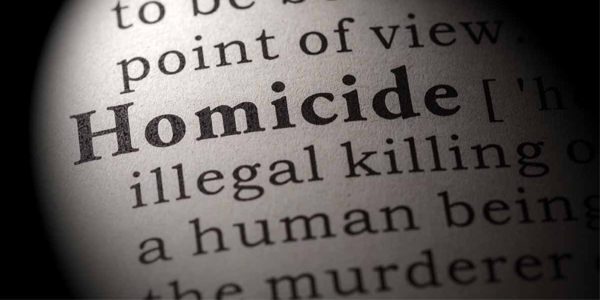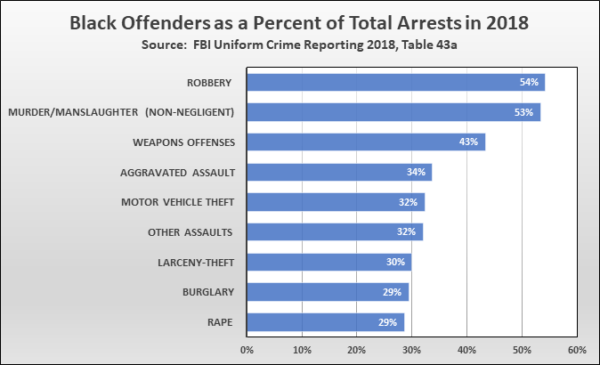
Black Lives Matter. Empower Good Cops to Save Them
Written by Daniel Horowitz
The New York Times is breathlessly accusing Minneapolis police of being seven times more likely to shoot black people than white people. What the paper fails to tell you is that black people are 12.1 times more likely to be a victim of a gun homicide in Minneapolis than white people are. So adjusting for that obvious fact, police actually have a higher rate of shooting against white suspects per interaction.
According to the CDC, the black homicide rate was 12.9 times higher than the white homicide rate from 2010 to 2015, and homicide was the leading cause of death for black people under 35. That is the true travesty and tragedy of racial injustice we need to discuss.
Pandering is not compassion. Misdiagnosing a culture of violence in many inner cities as being fundamentally caused by the police is not only blaming the cause on the reaction, but is ignoring the true travesty of lost black lives due to unbridled gang-related crime. These crimes will only grow if police are forced to cower and retreat as they did in Baltimore after the Freddie Gray case. Crushing the police deterrent against violent crime in reaction to George Floyd’s death is the equivalent of governors sending COVID-19-positive patients into nursing homes to treat the coronavirus crisis. In other words, they harm they very people they purport to protect.
Liberals continue to suggest that black people are more likely to be killed by police than white people. That is utter nonsense, and as I’ve already proved, the opposite is true. Non-criminals who don’t interact with the police – white or black – have zero chance of dying of a police shooting. What liberals fail to account for, though, is that an outsized share of the violent crime is committed by African-American criminals, which is what will most likely cause an interaction with the police. If you adjust for that fact, there is no discrimination whatsoever.
Here is a list of criminal arrest charges by category of crime along with the percentage distribution of black people arrested for those crimes in 2018, according to the FBI’s Uniform Crime Reporting. Keep in mind that as of 2018, black people only composed 12 percent of the national population:
If you actually look at the FBI data every year, you will notice that the share of total drug or other crimes committed by black offenders – crimes that some in the political class believe to be low-level – is actually lower than their share of the more serious and/or violent crimes. It’s not drugs or disorderly conduct that are responsible for the lion’s share of police interactions with black suspects.
It doesn’t take a rocket scientist to figure out that if such a disproportionate number of violent crime arrests are among black suspects, then a disproportionate number of the most volatile and violent arrests, which usually involve resistance from the suspect, will be among black suspects. Thus, it’s extremely dishonest to decry the disparity in police interactions without focusing on the underlying problem of the disproportionate amount of criminal activity driving police into those neighborhoods with 911 calls. That is the true injustice that is harming black neighborhoods, where most of the people are peaceful citizens and suffer from all this crime, which is often gang-related.
For example, in Chicago, some have suggested that black people are 14 times more likely than white people to be shot by police. But black adolescents are roughly 50 times more likely to be killed by homicide in Chicago than the national average of black adolescents, much less than their white counterparts, who have an infinitesimal homicide rate by comparison.
Sadly, it’s among this population that most of the shootings and other violent crimes occur, which will naturally draw police interaction, most of the time justified. It’s like complaining that there is more chemotherapy among cancer patients than non-cancer patients. The cancer of violent crime is in black neighborhoods much more than anywhere else, and absent good police work and strong sentencing, it kills too many African-American males.
Indeed, the true racial injustice in this country is the fact that a very small number of black criminals are responsible for a shockingly disproportionate amount of violent crime and property crime, which ensures that law-abiding African-Americans are disproportionately harmed relative to the rest of the population. That is the true inequality that lies at the core of the devastation of inner cities and would be the subject of a national dialogue if we actually had a mature political system.
At the heart of the violence in the inner cities are the gangs. Yet local governments are not equipped to deal with sophisticated cross-state gangs that destroy neighborhoods. It’s a lot easier to pander and push legislation to release criminals and handcuff the police, but what actually would save black lives is anti-gang legislation. Sadly, when Georgia Governor Bryan Kemp tried to push commonsense gang legislation, a bipartisan collection of the leniency movement blocked his initiative.
According to the FBI, “Criminal gangs commit as much as 80 percent of crimes in many communities.” Already a decade ago, it was estimated that 1.4 million gang members from over 33,000 gangs “are responsible for an average of 48 percent of violent crime in most jurisdictions and up to 90 percent in several others.” Again, given that most victims of violent crime are African-Americans and most gang recruiting is in their neighborhoods, the gangs are the biggest security threat to black neighborhoods. The pro-gang political class that engages in gang crisis denying are the ones who are fomenting the most dangerous form of racial inequality in the justice system.
Anti-gang legislation is the proverbial fruit and vegetable diet, but the shameless pandering politicians and nonprofits would rather serve the sugar. They would rather not talk about the fact that more aggressive policing and tougher sentencing have saved roughly 4-5K black lives every year in the form of fewer black homicide victims for 25 years, relative to the homicide levels of the 1980s and early 1990s.
Crime has been rising in the Minneapolis area, and much of it is driven by gangs. Hamstringing the police will lead to exponentially more deaths, as in Baltimore. Conversely, if lawmakers really cared about black lives, they would target the true source of the disparity in shootings, which is homicide by gangs. Instead, the president of the Minneapolis city council is promising to abolish the police. That would be the dream of the local gangs and would help blot out the dreams of a generation of peaceful African-American citizens struggling to avoid the crossfire.













